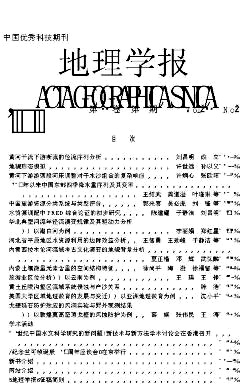GE Quansheng, ZHAO Mingcha, ZHENG Jing yun
The research of landuse and land cover change is a core project in the international global environmental change studies, and project aims at revealing how landcover has been changed in China in the last century will be an important and necessary action. Based on the standardized and unified data collected from numrable and valuable historical documents and various statistical reports which were published before 1950 but now are scattered in the nationwide libraries and archives, and the classification data obtained by investigations and remote sensing after 1950, the landcover change and characteristics of land use in China during the 20th century are traced and analyzed in this paper. The results are: ① The unused and non arable land keeps decreasing and landcover has been changed obviously. ② The cultivated land, forestland, horticultural land, settlement, and mining land, and transportation land are increasing, in which, the augmentations from 1914 to 1997 for cultivated land, forest land, horticultural land, settlement and mining land, and transportation land were 49×106hm2, 49×106hm2, 7 1×106hm2, 17 5×106hm2, 3 1×106hm2, respectively. ③ The grasslands, uncultivated arable land, water bodies and wetland are decreasing, in which, the decrements from 1950 to 1990 for the grasslands and uncultivated arable land were 65×106hm2 and 90×106hm2. ④ The proportional structure of land use consisted in the cultivated, forestland, grassland, horticultural land, settlement and mining land, transportation land, water bodies, and others by 10 19%, 13 02%, 40 83%, 0 11%, 0 49%, 0 21%, 2 35%, 32 8% in 1949, and by 14 14%, 23 65%, 26 91%, 0 85%, 2 33%, 0 53%, 4 30%, 27 29% in 1997, respectively.
